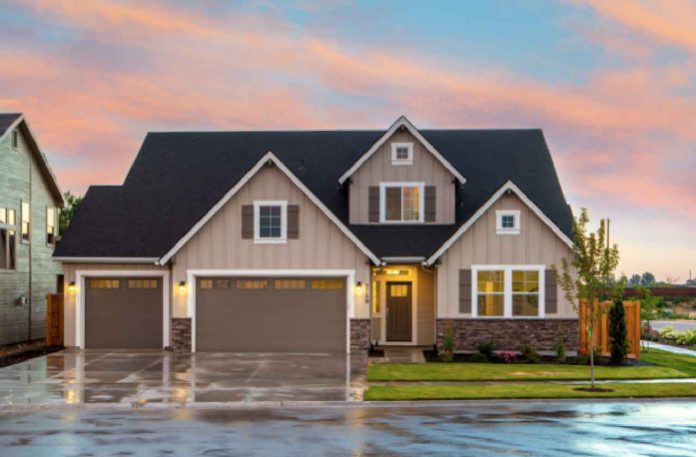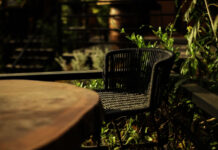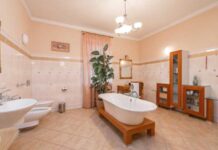When it comes to protecting and enhancing the exterior of your home, choosing the right siding is crucial, as it plays a vital role in defending your house against the elements and significantly impacts its aesthetic appeal and overall value. With a variety of materials available, each offering its own set of advantages and disadvantages, it’s important to understand the options before making a decision – and this guide provides an overview of the most popular offerings to help you select the best one for your home.
Vinyl Siding: Affordable and Low Maintenance
Vinyl is one of the most popular choices for homeowners due to its affordability, durability, and low maintenance requirements. Made from polyvinyl chloride (PVC), vinyl siding is available in a wide range of colors, textures, and styles, including options that mimic the look of wood, stone, or shingles.
Pros
- Cost-Effective: Vinyl is one of the most affordable ptions available.
- Low Maintenance: It doesn’t require painting, and it’s easy to clean with a hose or pressure washer.
- Durability: Vinyl siding is resistant to moisture, pests, and rot.
Cons
- Environmental Impact: Vinyl is made from plastic, which has environmental implications in terms of production and disposal.
- Fading and Cracking: Over time, vinyl may fade or crack, especially in extreme temperatures.
Vinyl siding is an excellent choice for homeowners looking for a budget-friendly, easy-to-maintain option that offers a variety of design possibilities.
Wood Siding: Classic Appeal with Natural Beauty
Wood siding has been a traditional choice for centuries, valued for its natural beauty and timeless appeal. Available in various styles, including clapboard, shingles, and board-and-batten, wood can be painted or stained in any color, offering tremendous flexibility in home design.
Pros
- Aesthetic Appeal: Wood provides a warm, classic look that’s hard to replicate with synthetic materials.
- Versatility: It can be customized with different finishes, stains, and paints.
- Sustainability: Wood is a renewable resource, and sustainable options like cedar or reclaimed wood are environmentally friendly.
Cons
- Maintenance: Wood siding requires regular maintenance, including painting or staining every few years to protect it from moisture and pests.
- Cost: High-quality wood can be more expensive than other options.
Wood is ideal for homeowners who prioritize aesthetics and are willing to invest time and money in maintenance to preserve its beauty and longevity.
Fiber Cement Siding: Durability and Versatility
Fiber cement is a composite material made from cement, sand, and cellulose fibers. It’s known for its durability, resistance to fire, and ability to mimic the appearance of wood, stucco, or masonry. Brands like James Hardie have popularized fiber cement siding for its long-lasting performance and versatility.
Pros
- Durability: Fiber cement siding is resistant to rot, pests, and fire.
- Low Maintenance: It requires less upkeep than wood and holds paint well.
- Aesthetic Flexibility: It can be manufactured to resemble wood, stone, or stucco, offering a range of design options.
Cons
- Installation Cost: Fiber cement can be more expensive to install due to its weight and the specialized labor required.
- Moisture Sensitivity: If not properly installed, fiber cement can absorb moisture, leading to potential damage.
Fiber cement siding is a great choice for homeowners looking for a durable, low-maintenance option that offers the look of natural materials without the associated upkeep – but if you want to keep the costs low, it’s important to work with experts like the team at H & J Roofing & Exteriors, so that you get the best quality for the lowest price.
Brick Siding: Timeless Strength and Stability
Brick is a classic option known for its durability, fire resistance, and low maintenance. While brick is traditionally associated with more stately homes, it can be used to create a variety of looks, from rustic to contemporary.
Pros
- Longevity: Brick siding can last a century or more with minimal maintenance.
- Fire Resistance: Brick is non-combustible, providing excellent fire protection.
- Energy Efficiency: Brick has excellent thermal mass, helping to regulate indoor temperatures.
Cons
- Cost: Brick is one of the more expensive options, both in terms of material and installation.
- Limited Design Flexibility: While it offers a classic look, brick doesn’t offer the same variety of colors and styles as other options.
Brick siding is perfect for homeowners who want a long-lasting, low-maintenance exterior with a timeless appearance and excellent fire protection.
Stucco Siding: Mediterranean Charm
Stucco is a cement-based material often associated with Mediterranean, Spanish, and Southwestern architectural styles. Applied in multiple layers over a wood or metal lath, stucco creates a seamless, textured finish that can be tinted in various colors.
Pro
- Durability: Stucco can last for decades with proper maintenance and is resistant to fire and pests.
- Energy Efficiency: Stucco provides good insulation, helping to keep homes cool in hot climates.
- Aesthetic Appeal: Stucco offers a distinctive, textured appearance that works well with a variety of architectural styles.
Cons
- Cracking: Stucco is prone to cracking, especially in areas with significant temperature fluctuations or ground movement.
- Maintenance: It requires periodic inspection and repair to prevent moisture infiltration.
Stucco siding is ideal for homeowners who appreciate its unique aesthetic and live in climates where its insulating properties are most effective.
Work with the Best in Exteriors in Calgary
Choosing the right siding material is a significant decision that impacts the durability, energy efficiency, and appearance of your home – so whether you opt for the affordability and low maintenance of vinyl, the timeless appeal of wood, the durability of fiber cement, the strength of brick, or the charm of stucco, each option offers unique benefits to suit different needs and preferences.






